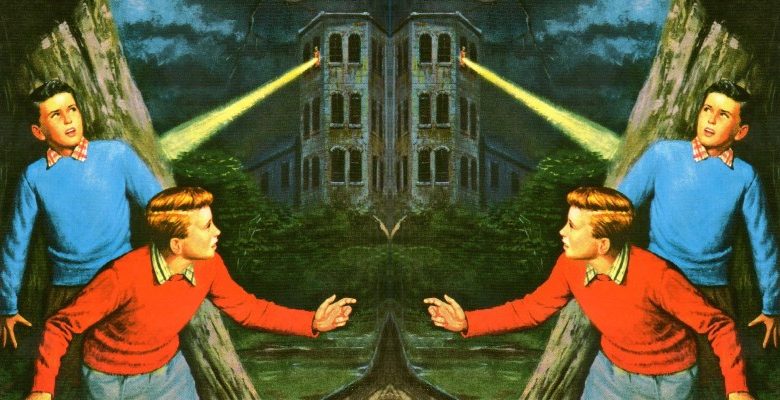[ad_1]
When I started writing my current thriller, Fool Her Once, it was a huge surprise to me that there were only a couple of other thrillers set on the North Fork of Long Island.
Run a Google search on “crime thrillers set on the North Fork of Long Island” and you’ll find that the second result (sometimes the top result) is for a blog I posted in 2021 titled: “North Fork of Long Island: Why It’s The Setting for Book 3.”
The first time I ran that search, I was so surprised, I nearly spilled my glass of wine all over my laptop.
By that time, I’d come to know the North Fork well. It’s a spit of land extending 30 miles from the “crotch” of Long Island at Riverhead, where the land divides into two forks, all the way east into the Atlantic Ocean.
Across the Peconic Bay lies its more glamorous, chic sister, the South Fork. The world knows the South Fork better as the Hamptons, to which, understandably, bestselling authors like James Patterson (Beach Road, The Murder House) and James Brady (Gin Lane, Further Lane) have gravitated as a setting for thrillers galore.
But the North Fork has its own distinctive charms. It’s an area of secluded coves and inlets, both on the Peconic Bay side and on the Long Island Sound side with vast stretches of remote nature preserves and acres of farmland and vineyards in between the shores. Within its “borders” you’ll also find Robins Island, a teardrop shaped land mass in the middle of Peconic Bay, as well as Plum Island, which until next year remains the location of a highly protected government laboratory researching killer animal diseases and the pathogens that could potentially be used for bioterrorism.
Plum Island is also the title of Nelson DeMille’s 1997 bestseller. For whatever weird algorithmic reason, it doesn’t usually pop up in any Google search of North Fork crime thrillers, but it is set there, as is Christopher Bollen’s 2015 thriller Orient, entitled after the name of the town on the very easternmost tip of the North Fork. Both thrillers use the terror that Plum Island inspires in local residents as key elements in their plots.
In Plum Island, the murder of two scientists working on that island provides the main mystery to be solved by John Corey, an NYPD cop who is recuperating on the North Fork from gunshot wounds.
In an early chapter, Corey and other law enforcement officials are discussing the possibility that the murders could be linked to the work of the two scientists at the animal disease research facility.
This is John Corey’s innermost thought at that moment:
“Everyone knew this was the scariest topic in the universe. I mean when it was nuclear weapons, people were either fatalistic or never believed it was going to happen.
“With biological warfare or biological terrorism, it was imaginable. And, if the right plague got loose, it was lights out world, and not in a quick incandescent flash, but slowly as it spread from the sick to the healthy, and the dead lay rotting where they fell . . .”
In Christopher Bollen’s Orient, a series of sudden deaths (later confirmed as homicides) is linked to a mutant, unidentifiable creature that washes up on the beach across from Plum Island.
Here’s an excerpt from Orient on the same theme of the bioterrorism threat posed by Plum Island:
“By the standards of local legend it was very real. There, government scientists conducted clandestine biological warfare experiments on live animals . . .
“It was widely believed by the residents of Orient that Lyme disease had been invented in those laboratories, created by the government to inflict on future enemies, and that the disease had been carried by wildlife across the water to the North Fork . . . It was biological warfare turned on its own citizens.”
Unfortunately for thriller writers, other than Plum Island, the North Fork until now has offered little else to spark the imagination. There is no real-life crime to speak of. The latest statistics for a period ending in 2019 show zero homicides committed over the previous ten years in Southold Township (which includes the eight biggest North Fork villages and a hamlet).
The North Fork is one of the most crime-safe areas in the entire continental United States. An internet search for murders/homicides on the North Fork generally produces results that highlight the Wickham Axe Murders. The brutal ax attack and slaying of a farmer and his wife in Cutchogue was perpetrated by a farmhand. In 1854.
Most recently the flurry of criminal activity that made headlines in local papers involved poachers caught on Robins Island, which features prominently as a major crime scene in my new thriller Fool Her Once.
The private island in the middle of Peconic Bay is owned by billionaire hedge fund manager, investor and philanthropist, Louis Bacon. It’s wooded 435-acres are mostly designated as a nature preserve for birds and albino deer. The only buildings on it are contained in Bacon’s family compound.
Last fall, a caretaker for Bacon’s estate found latrines, hunting equipment, and surveillance cameras on the island, and then discovered the trespassers. Because they were close to the house, there were suspicions that the trespassers might have been planning some sort of home invasion of Bacon’s mansion. But that talk fizzled out when the poachers were arrested and charged only with trespassing and hunting violations.
And therein lies a clue as to why the North Fork has mostly been ignored by thriller writers. As Nelson DeMille’s protagonist in Plum Island puts it: “The South Fork is the trendy Hamptons: writers, artists, actors, publishing types, and other assorted anals. Here, on the North Fork, the folks are farmers, fishermen and such.”
Prof. Marilyn Weigold, author of Peconic Bay, a non-fiction study of the area, its people, history and development, had this to say: “Until recently the North Fork was viewed as an agrarian region . . . [It] was portrayed as a nice alternative to the Hamptons for those seeking a tranquil getaway.”
Both Marilyn Weigold and Nelson DeMille make a point. For the longest time, the North Fork was potato fields, farms and farmstands, and vineyards. Local regulations mandate that 60% of produce sold at those farmstands must be farmed on-site. On the two lane highway running from Riverhead to Orient Point, it’s easy to get stuck behind a tractor carrying bales of hay.
Tranquility was key. Twenty five years ago, the New York Times, in an article that used the words “lull” and “North Fork” in the same headline, quoted a local author describing Greenport as “the kind of place where two guys buy a big old Victorian house together and spend a lot of money fixing it up while next door to them someone is moving a refrigerator onto the porch so that they have more space to store beer.”
Joseph Finora, a long-time local resident of Laurel, is the self-published author of a murder mystery, Red Like Wine, set on the North Fork. The murder victim owns a vineyard, and the plot involves a revolutionary discovery concerning the production of wine.
Finora told the Wall Street Journal in an interview in 2015 that he had not been able to sell his novel to a traditional publisher. One reason for the many rejections, he said, was that “it was too local.”
It’s a phrase, I suspect, that could have been interpreted to mean that, unless a crime thriller has a high-concept premise of the possible destruction of humanity by a virus manufactured on nearby Plum Island, the North Fork setting and characters are just too boring for crime fiction.
But that is changing. According to Prof. Weigold, “The pandemic accelerated an evolution which was already underway: the Hamptonization of the North Fork. The affordability of housing compared with the Hamptons and the ease of reaching New York City by express bus for remote workers (Ed. Note: the Hampton Jitney, a major South Fork transportation company bought into the North Fork in 2006) and the natural attractions of the North Fork make the area very desirable.”
In other words, the rich and famous have been discovering the North Fork for a while and now are moving in big time. It shows. Small ranch houses are being razed and rebuilt into McMansions by wealthy cash buyers looking for summer and/or second homes; cheap motels are being torn down and replaced by chic, boutique hotels; fancy farm-to-table restaurants are opening all over the North Fork. The White Flower Farmhouse in Southold sells vintage European linens and antique ceramics; the Village Cheese Shop on Love Lane in Mattituck offers enough different cheeses to satisfy the most sophisticated palate.
Limos bring New York City visitors to the wine tasting rooms that are dotted along the two-lane Route 25, which runs the entire length of the Fork. Last summer, the Real Housewives of New York came to the North Fork to produce dozens of instagrammable moments as well as drama.
The potential for conflict at every level has increased.
Money and drugs are moving in. Also, last summer, a series of overdose deaths caused by cocaine laced with deadly fentanyl, a synthetic opioid, threatened to overwhelm the Southold police department.
Meanwhile, after the recent discovery of skeletal remains in the cellar of a Southold house, questions have been raised—and still have not been answered—about the conduct of police officers and elected officials in the Township. The remains were identified as those of a wife and mother who went missing in 1966. The house in which they were found was once owned by her lover, a Southold cop.
According to a recent local newspaper article, his abused wife reported him initially and told cops back then that he had made her watch as he buried his mistress’s body in the cellar. The article strongly suggests that her lover was protected from an initial investigation by fellow officers in the police department. All the main characters in this saga are now deceased.
And that to me, at least, sounds like it has the makings of a dark, gritty, domestic thriller set on the North Fork of Long Island.
***

[ad_2]






